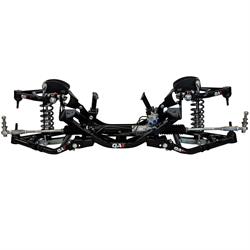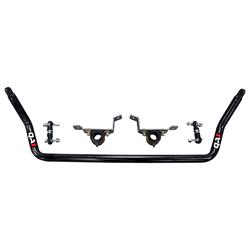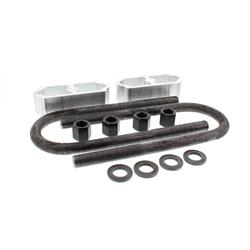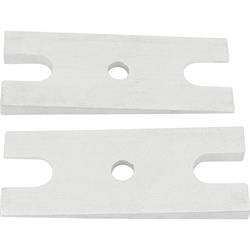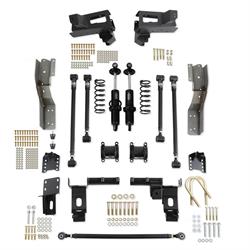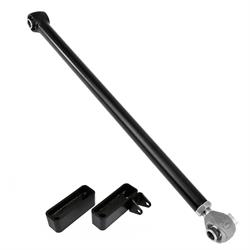1967-1972 Chevy C10 Pickup Lowering Guide
The Many Options for A Dropped C10 Pickup
Chevrolet’s immensely popular ’67-’72 C10 pickup, named the Action Line by General Motors, ushered in a new generation of pickup truck styling with more personal design cues and options. Pickup trucks were slowly leaving farm life behind and becoming more common for family use. As people bought campers, boats, and other items that required them to be towed to their destination, the common pickup truck took on a more family friendly role. Today, it isn’t uncommon to spot a tired and worn 2nd generation C10 hiding behind someone’s barn or out in the field, having been retired after years of faithful camper hauling duty. Of course, this is where we, as enthusiasts step in and provide that C10 with a second chance at life, towing it home and planning a fun project ride.
Once you have that forlorn C10 sitting in your garage your gray matter goes into overtime with all the cool things you plan to do to it. Supercharged LS engine swap, 6-speed manual, big wheels, and lots of rubber underneath it and of course some serious brakes at all four corners. Those are all serious wants, but the first thing a ’67-’72 C10 needs is to be lowered. The stock ride height is, dare we say, clownish, by today’s thoughts and it won’t matter how much horsepower you have or what killer leather interior you have stitched up if the stance is not right. In that vein, we’re here to share with you the many 67-72 C10 suspension upgrades available to lowering your C10 pickup and what may be the best option for your mechanical abilities and your financial manager (spouse).
Is It Better to Lower with Springs or Spindles?
Lowering, or drop springs, are an extremely popular way to lower a C10 pickup. In general terms, you remove the stock springs (front, rear, or both) and replace with a lowering spring that will lower the vehicle a specific amount. You can usually find springs in the 2- to 4-inch drop in ride height that will be a direct swap with no other changes. The immensely popular “2/4 drop” (2-inch front, 4-inch rear C10 lowering springs) creates a level ride height that gets rid of the stock truck’s raised rear haunches and even comes with new spring retaining hardware for the rear springs (trust us you’ll need it!).
You can also score new rear coil spring retaining hardware if you need it for other C10 lowering springs you have on hand. Installation is usually standard nut and bolt work unless you have some rusty hardware. Best of all, you don’t even have to replace the shock absorbers for this dropped C10 ride height if yours are in good condition.
If you’re looking to go lower than 4-inches in the rear you’ll need to modify the frame rails with a C-notch kit for axle housing clearance, otherwise your axle will kiss the frame over any bumps or if you load the bed down with stuff. Catch our Toolbox video on how easy this C-notch kit is to install.
You’ll also need to update the stock fixed length Panhard bar to an adjustable version when going this low in the rear. You can use an adjustable Panhard bar with a 4-inch or less dropped C10 as well if you’re looking to run wide rear tires and want to get the tire to wheel opening spec spot on. Additionally, anything lower than 3 inches in the rear will benefit from using shock relocation brackets that stand the shocks up more vertically, which allow the shocks to work more efficiently.
The early 2nd gen C10 pickup (up to 1970) came from the factory with drum brakes up front. Often owners want to update to disc brakes, which require a disc brake spec spindle. Using a drop spindle not only helps lower your C10 (usually set for a 2- to 2-1/2-inch drop), but also allows converting to disc brakes more easily. Best of all, you can combine a drop spindle with a lowering spring for an aggressive 4-inch plus drop in the front of your C10 if you’re looking for that slammed look.
Grabbing a drop spindle/disc brake conversion kit is a terrific way to shop and guarantee everything will work together. So, when it comes to springs vs spindles, they are both great bolt-on options to achieve a 2-inch or so front drop on your C10. Combining them, as we did with our in-house C10 project, is where you’ll really have that down low ride height that many people crave.
Before moving on to more tunable lowering options like air suspension and coilovers, we want to briefly touch on lowering blocks and shim kits. Adding lowering springs, while an easy DIY job in your driveway or garage, you might not end up as low as you would like. Combining a lowering spring with a lowering block is another way to achieve with lower ride height you’re looking for out back. If you find one side a hair lower than the other due to production tolerance build up or other issues, you can use a shim kit to get the high side lowered so your ride height from side to side will be spot on. Finally, don’t forget to confirm pinion angle once you’ve set your ride height. You might need some pinion angle shims to get it back into spec!
Do I Need New Shocks with C10 Lowering Springs?
This is an important question to ask. Some will say that lowering a C10 with a mild lowering of a couple of inches will allow you to use the stock shocks. We tend to disagree, mainly because any lowering spring, even if it is only a 2-inch drop, will have an increased spring rate that the stock shock is not valved for, reducing ride quality, and often leading to a bouncy ride. We highly recommend replacing the stock shocks with the best shocks for lowered C10 trucks you can afford. Shocks valved for lowered ride heights are essential to better ride quality. Extreme lowering will usually require a shock with different stroke range. Even better are adjustable shocks that allow you to fine tune your lowered suspension with a simple twist of a knob right on the shock body.
One additional thought on using the best shocks for lowered C10 trucks is the stock rear shock angle. GM installed the shocks in a staggered setup with a rather large installation angle, reducing the shock’s effectiveness. Shocks are the most efficient at controlling the spring and suspension movements in a vertical position. The closer you can get the shock vertical, the better it will work. This holds true for stock length shocks or lowering shocks. Using a rear shock relocation kit provides this better working angle by standing the shocks up more. We offer a similar front shock relocation kit for the 2nd gen C10 as well for front drops exceeding 3 inches to retain stock shock length for maximum suspension travel.
Which Is Better, Air or Spring Suspension?
The one issue with C10 lowering springs is that you are confined to the spring’s listed rate of drop. A 2-inch lowering spring is just that, 2 inches. If you install your springs and later wish you had gone lower, or perhaps you went for that “in the weeds” look with a ’67-’72 C10 5/7 drop only to realize you are scraping road reflectors off the highway when you have the family in the truck with you, then perhaps looking into an air ride setup is for you and your 67-72 C10 suspension upgrades.
With an air spring system, you can dynamically control your C10’s ride height for whatever ride height you need. Slam it to drop some jaws at the cruise night, then bring your ride height back up to drive home comfortably. For most air ride kits the installation is no different than installing lowering springs with just the additional work of running air lines, mounting the tank, and a little wiring. We offer both front and rear direct fit air springs for the C10 along with air suspension kits with compressor, tank, lines and more to get your system plumbed and operational in no time.
Is It Better to Get Coilovers or Lowering Springs?
Much like air springs, coilovers provide the opportunity to adjust your truck’s ride height infinitely and not have to rely on a fixed amount of drop from a coil spring setup. While air springs can be adjusted via a controller or switches in cabin, coilovers do require adjustment at the shock itself by moving a threaded spring seat up and down. So, while adjustable, there is a little more work involved. Additionally, coilovers allow the spring rate to be changed simply by changing the spring on the coilover itself. This allows spring rate and ride height changes to be made independently of each other as needed. Sadly, the C10’s front and rear suspension designs do not lead themselves to a simple coilover installation.
Front Coilover Solutions
If you’re considering coilovers for your 67-72 C10 suspension upgrades realize that you will be doing additional suspension work for the install. Up front you’ll need tubular control arms to allow room for the coilover shock assembly. We offer Ridetech Strong Arms that allow you to choose your coilover shock separately (we recommend the Ridetech coilover shocks) or the QA1 coilover conversion kit that includes upper and lower control arms and matching coilovers in a complete kit.
Rear Coilover Solutions
The ’67-’72 C10 truck’s “truck arm” rear suspension is similar in needing additional components to allow coilover shock conversions. You’ll find these systems are generally bolt-on in nature, requiring the removal of some factory riveted on brackets, though minor welding may be required depending upon the system you choose. One rear coilover system, from QA1, relocates the coilovers to outside the frame rails, providing room for aftermarket fuel tanks. While it includes single adjustable shocks, you will have to choose your own coilover springs. We also offer our own G-Comp rear coilover conversion kit with super strong truck arms, adjustable Panhard bar, and more. You can check out the G-Comp installation on our Project C10 for more details on this option.
What Else Is Needed for Lowering a C10?
While not necessarily a requirement, we do recommend upgrading your C10's sway bars (or adding one if your truck was not factory equipped). Upgrading to a larger front bar and adding a rear bar is a fantastic way to take that lowered stance and really put it to effective use with flatter cornering and increased stability.
An additional part to consider would be tubular front control arms. While we mentioned these earlier when discussing coilover shock conversions, the truth is, even with C10 lowering springs or a drop spindle, a set of tubular arms is a good add-on to your suspension lowering project. The tubular arms are much more rigid than the factory stamped steel arms, reducing flexing when cornering. Furthermore, tubular arms are designed with relocated ball joints and improved caster settings that work extremely well with modern performance tire sizing, power steering, and more. Once you compare your stock stamped arms to a set of tubular control arms, you’ll never want to use the stock control arms again!
Is There a Complete C10 Lowering Solution with Everything I Need?
For those that want to simply order a single part number and have everything you need to lower the front or rear of your C10 in a complete suspension kit, there’s no need to worry. We have the C10 suspension kit you need if you’re looking to simplify your project and get everything you need and not have to worry about spring rates, and whether you need a certain part to go with your lowering spring kit. These complete, engineered, kits provide everything you need and take the guess work out of lowering a C10.
For the rear, your C10 suspension kit choices are even greater, with kits that utilize the stock-style truck arm rear suspension setup, a torque arm system, and even a four-link rear upgrade option. These all-encompassing rear suspensions feature coilover shocks, adjustable links, and more. All these complete rear suspension options are bolt-in solutions only requiring hand tools and to drill/grind out some factory rivets and/or drill new holes in the frame. Easy work for a great reward!
As you can see, we have plenty of choices when it comes to lowering 67-72 C10 suspension upgrades. From a mild fixed 2/4 dropped C10 or a ’67-’72 C10 5/7 drop, to something like active air suspension for on the fly adjustments, we have what you’re looking for and what fits your project’s budget. Be sure to follow our own Project C10 build series as well for more ideas! Now get low!








